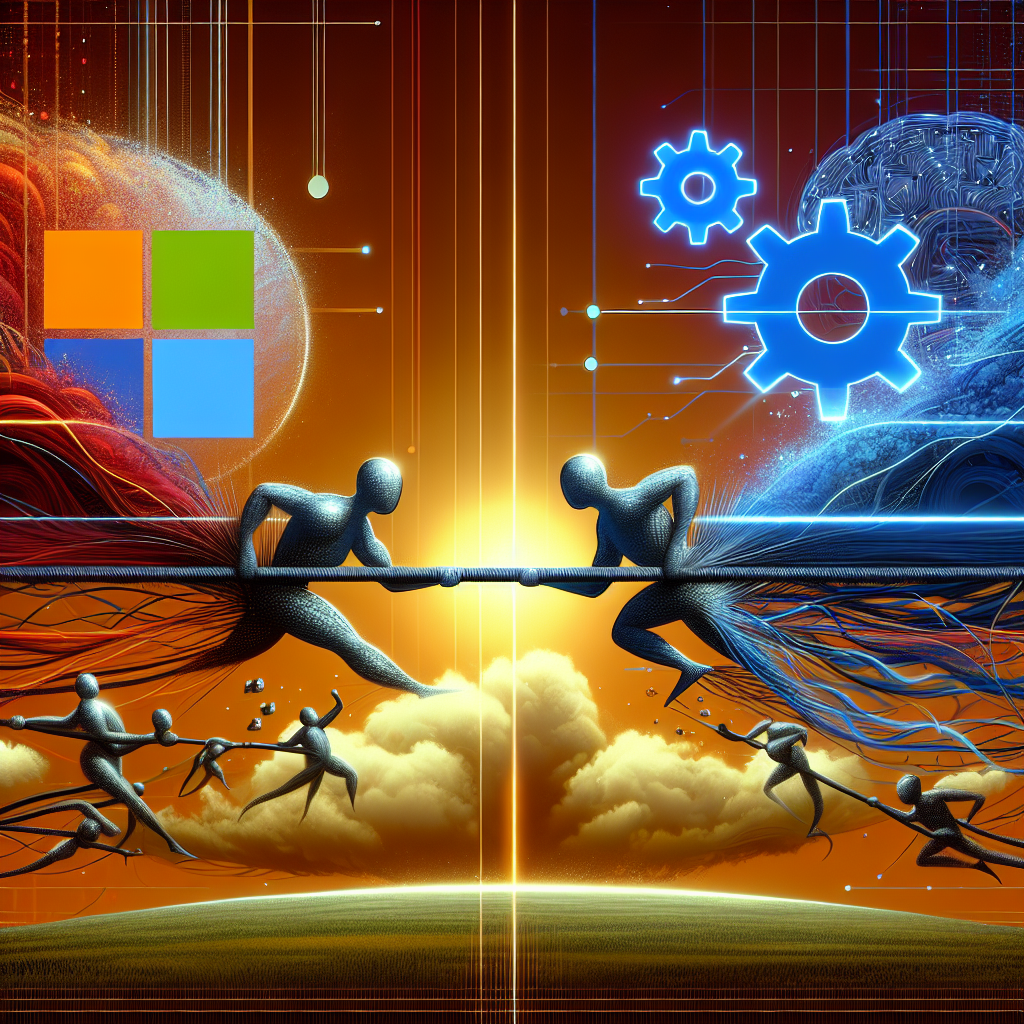The advent of artificial intelligence has catapulted us into a new era of technological innovation. However, as the AI landscape evolves, so do the complexities surrounding corporate partnerships in this space. One such partnership that has recently come under the spotlight is between tech giant Microsoft and AI research firm OpenAI. In this article, we delve into the intricacies of the Microsoft-OpenAI partnership, the challenges they face, and the potential implications for the future of AI technology.
Background of the Partnership
Microsoft and OpenAI established their partnership in 2019, with Microsoft investing $1 billion aimed at fueling the development of artificial general intelligence (AGI). The alliance positioned Microsoft as the exclusive provider of cloud computing services for OpenAI, through Azure, Microsoft’s cloud platform. This strategic move was designed to bolster both companies’ capabilities in the AI domain, with OpenAI benefiting from Microsoft’s vast resources and Azure platforms.
Strategic Goals and Objectives
- Accelerate AI research and development
- Enhance capabilities of Microsoft Azure
- Pioneer solutions towards achieving artificial general intelligence (AGI)
- Expand applications of AI to different sectors, including healthcare and finance
These goals reflect a shared ambition to create AI technologies that can replicate broad cognitive tasks, similar to human intelligence, which is deemed a monumental leap in the field of AI.
Challenges Impacting the Partnership
Despite the promising start, the Microsoft-OpenAI partnership is reportedly experiencing strains that could impact its trajectory. Several factors contribute to these challenges:
Cognitive and Ethical Disagreements
One of the core issues is related to cognitive and ethical disagreements concerning AI development pathways. OpenAI has always prioritized the development of safe and beneficial AI. However, there are concerns about reconciling these ideals within a commercially-driven partnership. Navigating balance between accelerating AI development and ensuring ethical safety guidelines is complex.
Technological Integration Difficulties
Integrating OpenAI technologies seamlessly with Microsoft’s existing architecture, particularly its cloud services, has posed significant challenges. Both organizations must ensure optimal functionalities without compromising on performance— a task easier said than done.
Competition and Market Dynamics
As competitors like Google and Amazon ramp up their own AI efforts, maintaining a competitive edge becomes crucial. There is massive pressure on Microsoft and OpenAI to continuously innovate, reinforcing their place as leaders in technology. This competition sometimes strains the collaboration, especially if strategic disagreements over priorities arise.
Implications and Future Prospects
The current strains in their partnership could lead to several potential outcomes, each carrying differing implications for the AI industry. Let’s explore a few possible scenarios:
Scenario 1: Strengthened Collaboration and Alignment
This scenario involves overcoming current challenges through open dialogue and renegotiation of terms where necessary. If Microsoft and OpenAI can align strategically, they may emerge as a stronger entity capable of pioneering impactful AI solutions.
Scenario 2: Strategic Divergence
Should disagreements persist without resolution, a strategic divergence might occur. In such a situation, both entities could opt to pursue independent pathways, potentially forming new alliances. While this could introduce dynamism and diversity in AI developments, it might fragment current collaborative projects rooted in the partnership.
Scenario 3: Increased Regulatory Involvement
Amidst the burgeoning culture of AI accountability, regulatory bodies might become more involved. Increased scrutiny and regulation can impact both how partnerships operate and pace AI advancements. Compliance will be emphasized, introducing updated frameworks for partnership dynamics.
The Path Forward
The road ahead for the Microsoft-OpenAI partnership is laden with both possibilities and challenges. A comprehensive assessment of shared goals, transparent communication, and dedication to ethical considerations in AI development are vital components for steering the partnership forward.
Future collaborations will need to address:
- Clear articulation of ethical AI guidelines and adherence
- Enhanced collaboration frameworks to accommodate innovations
- Commitment to addressing integration challenges promptly
- Engagement with regulatory bodies to align industry standards
Conclusion
The strained partnership between Microsoft and OpenAI serves as a microcosm of today’s complex AI industry relationships. While challenges are inherent in any partnership, the ability to navigate these with a focus on innovation and ethical responsibilities can set a precedent for future technological advancements. As the story evolves, the global tech community watches with anticipation, eager to see how these AI trailblazers will influence our technological future.

